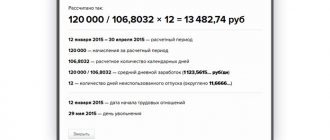Why is SOUT carried out?
A special assessment of working conditions is a set of actions aimed at identifying the presence or absence of factors affecting the health of an employee. The procedure was introduced by the government in 2014 as an alternative to certification, and is governed by Russian Federation Law No. 426FZ dated December 28, 2013.
The SOUTH identifies violations in the field of labor protection in cases where the employer conceals reliable information about the state of the workplace, saves on payments and benefits to the employee corresponding to the hazard classes. Thus, the state expresses concern for working people.
The procedure is carried out every five years. To conduct this, a special commission is created, which consists of the head of the company or an employee authorized for occupational safety, a member of a trade union organization represented by an employee and an expert from a special organization authorized to carry out special labor safety measures. To conduct an inspection, an order or instruction is issued; based on the results of the inspection, a declaration is filled out and the data is transferred to the Ministry of Labor.
After 5 years, the inspection period is automatically extended for the same period if:
- there were no changes at the enterprise in terms of the construction of the technical process;
- it was not planned to modernize equipment and purchase new and improved equipment;
- no accidents were recorded.
Having summed up the results of the inspection, the employer introduces them to employees against signature within 30 days.
If the inspection is not carried out on time, or the procedure for carrying out the special inspection system is violated, then the enterprise is obliged to pay a fine in accordance with the Code of Administrative Offenses 5.27.1 of the Code of Administrative Offences.
Classes of working conditions, according to the Labor Code, are determined depending on the impact on the employee’s health:
- 1st class, optimal. There are no conditions that would negatively affect the health of the employee.
- Class 2, acceptable. Negative working conditions are present, within acceptable standards, but require the use of protective equipment (glasses, helmets, special shoes, etc.). A night's rest or between shifts is enough to restore the body's performance.
- Class 3 and its subclasses from 3.1-3.4, harmful. Unfavorable health conditions are present at elevated rates. The group is divided into categories depending on the severity of the impact on the employee’s health.
The range of work is wide:
- with toxic substances (paint, solvents, etc.);
- with welding;
- in a dusty room;
- in conditions of increased noise, pressure, vibration;
- requiring high physical activity, traumatic;
- in unfavorable atmosphere conditions (presence of viruses, pathogenic bacteria.
Class 4, dangerous. There are dangerous factors that lead to the development of serious diseases. This is work with radioactive substances and chemicals. This class is rare.
According to the Labor Code, in the third and fourth classes, full or partial payments and benefits are provided in the form of:
- salary allowances (Article 147);
- additional days of vacation (Article 117);
- reduction of hours of the working week (Article 92);
- other types of benefits (special food, paid treatment, early retirement).
When changes are made to an employment contract
Upon employment, the employer and the employee enter into an employment contract. The data entered into the document is regulated by Article 57 of the Labor Code of the Russian Federation. Information about working conditions and appropriate compensation, if any are provided for by the hazard class, is also required.
During the validity period, changes may be made to the contract by issuing additional documents. agreements.
When adjusting the conditions identified during the examination, mandatory amendments must be made to the employment contract based on the results of the special assessment, through the signing of an additional agreement. agreements.
How to specify working conditions in the workplace in an employment contract after carrying out special labor assessment in 2021
Mandatory conditions necessary for inclusion in the Employment contract are the conditions in accordance with Article 57 of the Labor Code of the Russian Federation.
working conditions in the workplace has been included in the mandatory requirements since 01/01/2014
Working conditions are the conditions under which an employee performs a labor function in the workplace. Working conditions may be influenced by harmful and (or) dangerous factors in the working environment.
To determine these factors and, accordingly, working conditions, it is necessary to conduct a special assessment of working conditions (SOUT), which can only be performed by a specialized accredited company included in the register of experts.
Based on the special assessment carried out, a specialized organization establishes classes (subclasses) of working conditions in the workplace, which are divided into 4 classes. These classes are as follows:
- optimal (grade 1);
- acceptable (class 2);
- harmful (grade 3);
- dangerous (class 4).
We know that until December 31, 2018
All companies and individual entrepreneurs with hired employees, with some exceptions, must conduct a special assessment of working conditions.
The results of such a special assessment must be included in the Employment Contract
with the employee, where to clearly indicate a certain class of working conditions.
Working conditions at the workplace can be included in the current employment contract by means of an additional agreement:
- Additional Agreement No. 1
- To Labor Agreement No. 15/18 dated January 16, 2021
- "20" December 2021
- Moscow
- Limited Liability Company "Rumbik" represented by the General Director Vladimir Ivanovich Pozdnin, acting on the basis of the Charter, hereinafter referred to as the Employer, and Natalya Evgenievna Kirzhachina, hereinafter referred to as the Employee, entered into an additional agreement to include in the employment contract No. 15/18 dated "16" January 2021 the following changes:
- State clause 1.6 of the Employment Agreement in the following wording: “Working conditions at the Employee’s workplace are acceptable - class 2 (according to the results of a special labor assessment dated October 19, 2018)”
- These changes come into force on December 20, 2021.
- All other terms of the Employment Agreement are considered unchanged and binding on the parties.
- This agreement is drawn up in two copies, one for each of the parties, and is a mandatory annex to the Employment Agreement concluded between the Parties.
Signatures of the parties:
| Company: LLC "Rumbik", TIN 7707589645 KPP 771504002 Russia, 108541, Moscow, st. Abelmanovskaya, 4, office 104, account 40702810351000664518 in Alfa Bank BIK 044525593, account 30101810200000000593 Telephones, | Employee: Kirzhachina Natalia Evgenievna Passport series 54 24 No. 143657 issued by the Yuzhnoye Butovo Department of Internal Affairs in Moscow Department code 772-047 Address: 108541, Moscow, st. Taganskaya, 13, apt. 71 |
| Signature: _____________ (Pozdnin V.I.) | Signature: _____________ (Kirzhafina N. E.) |
- A copy of additional agreement No. 1 to employment contract No. 15/18 dated January 16, 2021 was received by:
- Date "____" __________
- Employee signature ________________
In addition, if working conditions are considered harmful or dangerous, then the Employment Contract must also include data on guarantees and compensation.
employee for working with such factors. The data to be included in the Employment Contract is as follows:
- establish reduced working hours (no more than 36 hours per week) (based on the results of a special assessment of working conditions, if working conditions in the workplace are classified as hazardous working conditions of the 3rd or 4th degree or hazardous working conditions);
- provide annual additional paid leave (minimum duration of leave of at least 7 calendar days) (based on the results of a special assessment of working conditions, if working conditions in the workplace are classified as hazardous working conditions of the 2nd, 3rd or 4th degree or hazardous working conditions);
- pay increased wages (the minimum increase is 4 percent of the tariff rate (salary) established for various types of work with normal working conditions);
- provide personal protective equipment (according to the standards for issuing such equipment);
- carry out free distribution of therapeutic and preventive nutrition, in accordance with the Rules for the free distribution of therapeutic and preventive nutrition, approved by Order of the Ministry of Health and Social Development of Russia dated February 16, 2009 N 46n;
If an employee is accepted into a newly organized workplace where a special assessment of working conditions has not yet been carried out, then the general characteristics of the workplace are indicated.
After conducting a special assessment of working conditions and familiarizing the employee with a signature card with a special assessment of working conditions at his workplace, it is necessary to notify the employee
on changing the terms of the Employment contract.
The employment contract must include terms on the class (subclass) of working conditions, as well as guarantees and compensation. This must be done in writing and no later than 2 months in advance.
Cancellation of benefits
It is carried out if the working conditions are harmful or dangerous and are found to be acceptable or optimal during inspection (Article 74 of the Labor Code of the Russian Federation). This is possible if the workplace is modernized, new modern equipment is purchased, and additional equipment is installed. cleaning, filters, etc.
Two months before the end of accrual of benefits, the employee is notified of this by a written notice drawn up in any form, certified by the signature of the general director of the organization.
If the employee is not satisfied with this fact, in this case the employer may offer another job, if available. Or the employment contract is terminated by voluntary consent of the parties.
The employee is also authorized to appeal these special assessments and decisions on the state of working conditions in court, or contact the Ministry of Labor with a request for a re-assessment.
According to Law No. 421-FZ, payments and benefits have undergone changes compared to the certification carried out before October 1, 2014.
For example, subclasses 3.1 and 3.2 abolish the right to a shortened working week. For subclass 3.1, additional vacation days are canceled.
But if, based on the results of the special labor assessment, working conditions have not changed since then, and no improvements have been introduced in the workplace, then the compensation is retained.
How to correctly make changes to an employment contract
According to Part 2 of Art. 57 of the Labor Code of the Russian Federation, when applying for a job, the employment contract specifies in detail the working conditions and compensation corresponding to the class of compensation.
If an employee gets a job at a newly opened workplace that has not yet passed the SOUT, then describe the general data about the work area, Art. 2. 17 of Law No. 426-FZ. For example, the office number, the location of the workplace relative to the walls, what is equipped, what devices and protective equipment are used, etc.
After carrying out the SOUT, an additional document is issued. agreement detailing the results of the audit. The document is recognized as part of the employment contract, and if agreed, it is signed by both parties. If the employee does not agree, he can make amendments and send them to management for review. The employer is obliged to provide feedback on them within thirty days.
If both parties disagree or there is no feedback from the manager, the resolution of the dispute may be referred to the court.
The absence of data on the class of conditions in the employment agreement, after the SOUT, is considered a violation of the Labor Code and the law on SOUT. For this, the employer must pay a fine.
Is it necessary to draw up an additional agreement to the employment contract after carrying out the special labor assessment?
9.3. To the head of the labor protection service: - ensure the storage of documentation based on the results of a special assessment of workplaces based on working conditions; — inform newly hired employees about working conditions in the workplace, about the existing risk of damage to their health, about measures to protect against the effects of harmful and (or) hazardous production factors during induction training against signature.
1. Consider the work and materials for the special assessment of working conditions of 61 workplaces completed. 2. Approve the report on the special assessment of working conditions. 3. Within three working days from the date of approval of the report on the special assessment of working conditions, send a letter with a scanned copy of the title page of the report to the Contractor’s email, and also send to the Contractor a copy of the approved report on the conduct of special labor conditions by registered mail with notification of delivery, or in the form of an electronic document signed with a qualified electronic signature. 4. Within 30 calendar days from the date of approval of the report on the special assessment of working conditions, organize familiarization of workers with the results of the special assessment of working conditions. 5. Based on the results of a special assessment of working conditions, within 30 calendar days from the date of approval of the report, develop a list of measures to improve working conditions and labor protection of workers (if necessary). 6. Within 30 working days from the date of approval of the report on a special assessment of working conditions, draw up and send a Declaration of compliance of working conditions with state regulatory requirements for labor protection to the State Labor Inspectorate at the place of its location in relation to workplaces where working conditions are recognized as optimal or acceptable , with the exception of workplaces specified in Part 6 of Article 10 of the Federal Law on SOUT No. 426-FZ, as well as in relation to workplaces in which harmful and (or) hazardous production factors have not been identified as a result of identification. 7. Based on the results of a special assessment of working conditions, by October 18, 2021, prepare proposals (if necessary) for making changes and (or) additions to the employment contract regarding the employer’s obligation to provide the employee with PPE, establishing an appropriate work and rest regime, as well as others guarantees and compensation established by law for work under harmful and (or) dangerous working conditions.
We recommend reading: What is the cost of living in Bashkiria in 2021 to become poor









